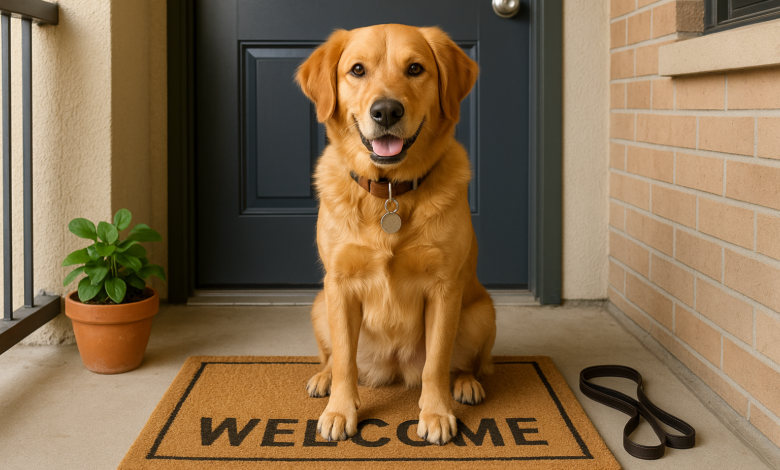We may earn a commission when you click on links across our website. This does not influence our opinions — learn more.
What’s a “Pet Resume” — and Do You Need One for Las Vegas Rentals?

If you’re a dog owner looking for a rental in Las Vegas, you’ve probably already run into some hurdles — pet fees, breed restrictions, and landlords who seem hesitant the moment you mention a four-legged roommate. That’s where something called a pet resume can come in handy. It’s not a legal requirement, and it won’t magically open every door, but it can make a real difference when you’re competing for a pet-friendly rental or trying to ease concerns about your dog’s size, breed, or behavior.
Whether you’re renting an apartment downtown, a house in Summerlin, or a condo near the Strip, a well-written pet resume helps show that you’re a responsible owner — and that your dog is more of a neighbor than a nuisance. Here’s what to include, why it matters in Vegas, and how to make yours stand out.
What Is a Pet Resume?
If you’re trying to rent a place in Las Vegas with a dog, you might hear the term pet resume tossed around — and yes, it’s a real thing. A pet resume is essentially your dog’s professional profile, designed to help ease landlord concerns and show that your pup is a respectful, well-behaved resident. Think of it like a job resume, but for your furry companion. While it’s not required by law, many landlords and property managers — especially in pet-restricted buildings or competitive rental markets — appreciate seeing one. It’s an easy, proactive way to present your pet in the best possible light and separate yourself from other applicants who simply check the “pet” box on a form.
In Las Vegas, where some apartment complexes enforce strict breed or weight restrictions and many landlords charge pet fees, having a pet resume on hand can demonstrate that you’re a responsible owner and your dog is a low risk. It’s also particularly helpful if your dog’s breed has a reputation (fair or not) for being loud, energetic, or aggressive. A solid resume can help challenge those assumptions with facts and supporting documentation.
What Should You Include?
A good pet resume should be short but thorough, ideally one page long, and neatly formatted — a PDF is best. Here’s what to include to make a strong case:
- Photo: Start with a friendly, well-lit photo of your dog looking calm and approachable. A picture helps humanize your pet and makes your resume feel more personal.
- Basic Information: Include your dog’s name, age, breed, weight, and whether they’re spayed or neutered. Also note if they’re microchipped and registered — this shows responsibility and preparedness.
- Personality and Behavior: Describe your dog’s temperament. Are they house-trained? Crate-trained? How do they behave around strangers, children, or other pets? Mention if they’re quiet, calm when left alone, or have a low energy level — all things that landlords like to hear.
- Training and Certifications: If your dog has completed any obedience training, passed the Canine Good Citizen test, or graduated from a local trainer’s program, include it. This shows that your dog is not just cute, but well-behaved.
- Health and Vet Records: List up-to-date vaccinations, flea/tick prevention, and provide your veterinarian’s name and contact information. Health transparency builds trust and shows you’re proactive.
- References: Just like you might ask a former employer to vouch for you, your dog can benefit from character references too. These can come from a past landlord, pet sitter, groomer, vet, or dog walker — anyone who can attest to your dog’s good behavior in or around rental properties.
- Owner Information: Include a short paragraph about yourself, your pet care routine, and how you ensure your dog doesn’t disturb neighbors or damage property. Highlight how often you walk your dog, your waste pickup habits, and how you handle pet-sitting if you’re away.
- Offer a Meet & Greet: If your dog is especially calm or friendly, offering to let the landlord meet them in person can go a long way toward reducing concerns — especially if your dog is a larger or commonly restricted breed.
Do Las Vegas Landlords Really Care?
Yes — more than you might expect. While not every property manager in Las Vegas explicitly asks for a pet resume, many are familiar with the concept and appreciate the extra step. In a market where pet restrictions vary widely by building, providing a resume can help smooth out the application process and put your landlord at ease. Some large rental groups in the area — particularly those affiliated with the Greater Las Vegas Association of REALTORS® — use formal pet application forms that already ask for a photo, behavior notes, vet contact info, and more. Submitting your own version ahead of time shows initiative.
It’s also worth noting that pet fees are very common in Vegas rentals. Landlords may charge a nonrefundable pet fee or deposit ranging from $200 to $500 per pet, and monthly pet rent anywhere from $25 to $50 or more. In some cases, they may also require proof of renters insurance with pet liability coverage. A clean, thorough pet resume won’t necessarily eliminate those costs, but it can help you negotiate or show that your dog is unlikely to be a risk — especially if paired with references and proof of responsible ownership.
Tips for Making Yours Stand Out
A strong pet resume doesn’t need to be fancy — it just needs to be clear, complete, and sincere. Use a professional but friendly tone and stick to the facts. Avoid over-selling or exaggerating your dog’s behavior. You’re aiming for trust and confidence, not perfection. If your dog has some quirks (maybe they’re nervous with new people or don’t like cats), be honest — but explain how you manage those behaviors responsibly.
Layout-wise, keep it simple: use headings, bullet points, and a consistent font. A one-page PDF that you can print or email with your rental application is ideal. Consider naming the file something like “Buddy_Pet_Resume.pdf” — clear, personal, and professional.
And here’s one final tip: If your current landlord thinks your dog has been a good tenant, ask them to write a quick reference letter. A simple sentence or two saying your dog didn’t cause any issues, was well-behaved, and never damaged the unit can go a long way. If you’re applying in a building with strict pet policies, that kind of endorsement can make all the difference.



